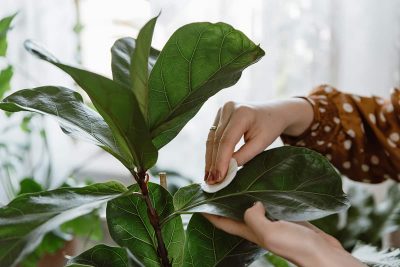Easter Lily Cactus is a captivating plant that enlivens your garden with its stunning blooms. It demands attention with its spherical shape and bright, fragrant flowers. Growing this cactus can be a rewarding experience, provided you understand its care requirements.
Growing geraniums in pots is a rewarding way to add a splash of color to your balcony, patio, or indoor space. When you choose to grow these vibrant plants in containers, you gain the flexibility to control soil conditions and move the plants to suit your design whims or their sun requirements. The secret to healthy geraniums starts with choosing the right pot, a well-draining soil mix, and the proper location to encourage blooming.
Let’s explore 20 magnificent trailing houseplants you can easily add to your home.
Growing sweet potato vines can transform even the simplest of spaces. Whether you have a small balcony garden or a sunny spot on your kitchen countertop, these fast-growing plants provide lush foliage and vibrant color with minimal effort. Perfect for beginners or those with limited space, let’s explore how you can successfully cultivate and care for sweet potato vines in your own home.
Introducing plants to your indoor space without windows can be a challenge, but it doesn’t have to be impossible. In this article, you’ll learn about various plant options that perform well in low-light conditions. The right selection of plants will not only enhance the aesthetic of your room, but also contribute to cleaner air and an overall pleasant atmosphere.
Rare houseplants captivate enthusiasts with their unique beauty and scarcity. As you explore this niche hobby, you’ll discover plants with unique patterns, striking forms, and the power to transform any indoor space. The allure of owning something exclusive drives the market, making the hunt for these living treasures both exciting and competitive.
Growing and caring for a peace lily is a rewarding experience, as these plants are known for their glossy, dark green leaves and elegant white flowers that resemble calla lilies 1. By understanding the basics of light, watering, and fertilizing, you can easily maintain a thriving peace lily in your home or garden.
Your Philodendron Pink Princess is more than just a plant—it’s a striking statement piece with its vibrant pink and green leaves. Yet, despite its royal name, this tropical beauty doesn’t demand high maintenance. Proper care can keep those unique leaves bright and healthy. Let’s dive into the essentials of nurturing your Pink Princess, ensuring it thrives in your indoor garden.
Growing peace lilies in water is a convenient and low-maintenance way to enjoy these attractive, easy-to-grow houseplants. Peace lilies, also known as Spathiphyllum, are known for their shiny, dark green leaves and elegant white flowers. They can adapt well to a variety of indoor environments, making them a popular choice among houseplant enthusiasts.
Pothos, a popular and easy-to-grow houseplant, can effortlessly enhance the ambiance of your living space. Known for its hardy nature, the tropical climbing vine is native to the Solomon Islands and has become a ubiquitous presence in homes and offices across North America. In this article, you’ll learn how to propagate pothos, allowing you to enjoy even more of this stunning plant.
As you tackle your weekly dusting routine, don’t forget your leafy roommates. Just like furniture, houseplants collect dust that can hinder their growth and health by blocking sunlight and clogging pores. Regularly cleaning the dust off your plants not only keeps them looking fresh but also supports their ability to photosynthesize efficiently, ensuring they thrive. Here’s why it’s essential and how to do it right.
Houseplants can greatly enhance the ambiance of your living space; however, they also require proper care to thrive. One essential maintenance task is leaching, a process to remove excess salts and minerals that build up in the soil. By learning when and how to leach your houseplants, you can ensure their health and longevity.











